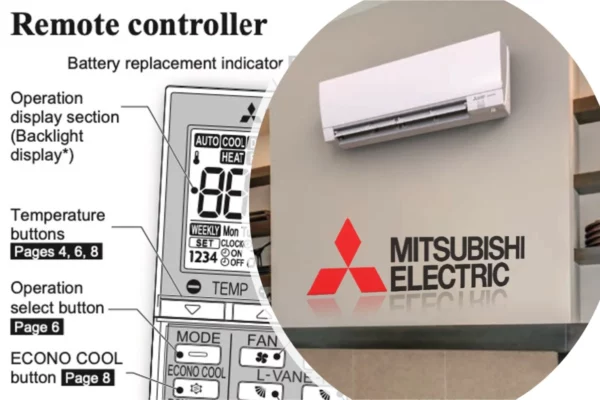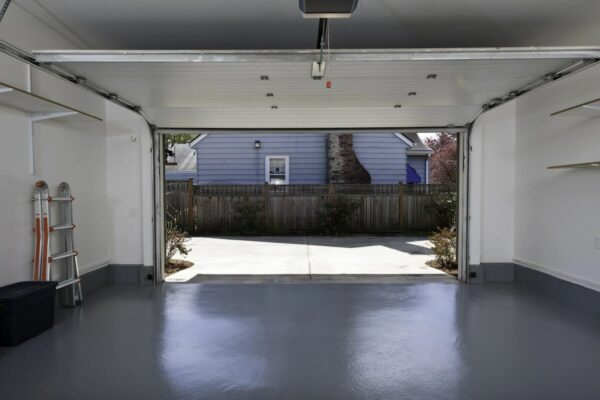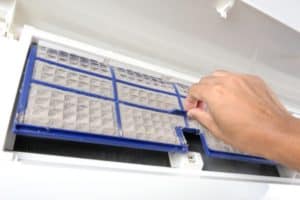Air Conditioner Controllers: A Beginner’s Handbook
Air conditioners had developed so much nowadays. They have advanced from basic analog controllers to digital controllers and now, smart controllers. Hence, I put together a handbook that covers everything about air conditioner controllers.
In this article, you can read about all the functions of air conditioner controllers including not just temperature and fan settings, but also various mode settings and all the features available in air conditioners nowadays. Then, we have an entire section talks about all the types of air conditioner controllers from remote controllers to smart controllers. Lastly, I’ll cover some of the control systems that protect the air conditioner which most people will never see.
Combine my past experience and research, I had to make this post long and comprehensive to cover every aspect. So, I hope you can find what you’re looking for in the following. Let’s get started.
Functions of Air Conditioner Controllers
The controller of air conditioners is not only used to switch on the unit, set temperature and fan speed, but it also has various mode settings that we can switch to when necessary. In addition, many air conditioners nowadays have many features that we can activate using a controller.
Temperature Settings
Apart from switching on the air conditioner, the most basic function of a controller is to set the temperature we want for our room. However, many people think that the temperature we set on the controller is equal to the room temperature. While most of the time it is true, but it is not always the case.
Typically, air conditioners can set from 16°C to 30°C (61°F to 86°F). When you set a temperature, the air conditioner will use a temperature sensor to detect the current room temperature. If you want to heat a room, you need to set it on heat mode (more on air conditioner modes in the following section).
Air conditioners use different methods to control room temperature. If you are interested to know more, you can check out my article on how air conditioner control room temperature.
Air conditioners control temperature by logic. Meaning when the set temperature is reached, it’ll stop the compressor and therefore, stop the cooling/heating. Non-inverter air conditioners will try to maintain the set temperature. However, they are not good in maintain a precise temperature.
Non-Inverter Air Conditioners
Many people called a non-inverter air conditioner an AC compressor (not entirely correct though). Non-inverter air conditioners are traditional air conditioners where the compressor will cut in/out to control the room temperature. However, they always have about 1°C difference from the set temperature. Therefore, not very comfortable.
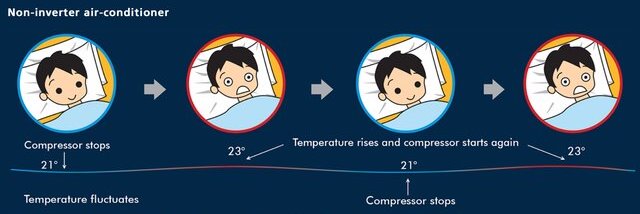
The room temperature fluctuation is greater when we use non-inverter air conditioners. They can’t cut in/out too frequently as it will shorten the lifespan of their compressor. Consequently, non-inverter air conditioners consume more power than inverter air conditioners.
Inverter Air Conditioners
Inverter air conditioners have a built-in inverter drive that controls the compressor speed and therefore, are able to control the cooling power and maintain a precise temperature. People often call an inverter air conditioner a DC compressor and here is why.
The inverter drive converts the alternating current (AC) supply to direct current (DC) in order to manipulate the frequency of the current. By changing the frequency of the direct current, it can vary the speed of the compressor. Thus, many people misunderstood that the compressor is using direct current (DC).
Because inverter air conditioners can control the speed of their compressor, they can maintain a precise temperature. Therefore, providing more comfort.

Many new air conditioners have to be an inverter type because the energy rating requirement is getting tougher and only inverter air conditioners are able to meet those high-efficiency requirements. However, inverter air conditioners are slightly more expensive than non-inverter air conditioners.
Despite inverter air conditioners are more expensive, I still prefer to use them. If you want to know more about it, feel free to check out my article on are inverter air conditioners worth the price? (9 reasons).
Mode Settings
Most air conditioners have three basic modes which are cool mode, dry mode and fan mode. In four seasons countries, many air conditioners have an additional heat mode. Besides, some air conditioners provide an extra auto mode to switch over modes automatically.
Cool Mode

In cool mode, air conditioners will cool if the room temperature is below the set temperature. It will stop when the room temperature is equal to the set temperature. For example, if you set to 30°C and your room is now 25°C, it’ll just stop providing cooling rather than switch to provide heating to the room. To heat a room, you need to use the heat mode.
Heat Mode

Heat mode is only available on air conditioners that have a heating function. Basically, heat mode is the reverse of the cool mode. Such air conditioners are known as heat pumps. The air conditioner reverses its operation to provide heating instead of cooling. Heat pumps have both cool and heat modes. In heat mode, air conditioners will heat the room if the room temperature is below the set temperature. It will stop when the room temperature is equal to the set temperature.
Dry Mode

Dry mode is also known as dehumidify mode. When switched to this mode, the air conditioner’s primary objective is to dehumidify rather than cool. However, the dehumidification process needs the air conditioner cooling coil to be cold. Thus, dry mode also provides cooling at certain degrees.
Fan Mode

In fan mode, air conditioners will not cool the room. The outdoor unit and compressor will not operate. Instead, just the indoor fan blower will run to circulate the air. Some people misunderstood that when using the fan mode, the air conditioner will bring in outside air to the room and that is not true. We need to connect a fresh air duct in order to bring outside air into the room.
Auto Mode

Some air conditioners have an auto mode which will automatically switch between modes accordingly to your desired setting. Auto mode is also known as auto changeover mode in some air conditioners. When the room temperature is too low, it’ll switch to heat mode and start heating the room. Vice versa, when the room is too hot, it’ll switch to cool mode to provide cooling.
The above modes are some of the common ones we can see on an air conditioner controller. If you wish to know all of the other modes, feel free to check out my article on air conditioner mode.
Fan Settings
We can set the fan speed on an air conditioner controller. Typically, there are 3 different fan speeds available. The lower the fan speed, the lesser the cooling but also less noise. Some air conditioners have an auto fan that will automatically control the fan speed based on your desired temperature setting.
Besides, we also can adjust the swing to direct the airflow to where we want it to blow at. Most air conditioners have an auto swing function where the airflow just changes direction repeatedly and automatically. Hence, the cold air doesn’t just blow to one place but is distributed more evenly.
Feature Settings
Nowadays, air conditioners have more features than ever before. Many of the features are aimed to provide more energy saving as well as giving more convenience to the user. Some of the common features are as follow:
ECO Mode
Using the ECO mode, the air conditioner will limit the compressor capacity and therefore, saving some energy. Besides, some air conditioners have a motion detector which will automatically reduce cooling when there is no people detector in the room and thus, save energy.
Ionizer
Many air conditioners nowadays have ionizers which is a feature that produces negative ions in the room. Negative ions will make the dust stick together and thus, make them fall on the floor. Therefore, you have cleaner air to breathe.
Auto Restart
Almost all air conditioners have an auto restart feature where they have a built-in memory to store your last setting on the controller. If there is any power failure, the air conditioner will auto restart with all your last setting when the power resume.
Types of Air Conditioner Controllers
Commonly, we have remote controllers and wired controllers which are mounted on the wall. Nowadays, smart controllers that use a mobile app to control air conditioners are getting popular. Meanwhile, people are not using the old analog thermostats anymore.
1. Remote Controller
Most air conditioners have a remote controller for the user to control their air conditioners. Remote controllers use infrared to send/receive signals. A remote controller needs to be used within a certain distance and usually, the air conditioner needs to be visible.



A remote controller has a display that usually shows the temperature setting, fan speed, operation mode, time and swing position. It is a handheld controller that is often made in plastic with about 10 rubber buttons. We need to change the two AA or AAA size battery for the remote controller once in a while just the TV remote controller.
Most of the time, we can control a few models of air conditioners from the same manufacturer using just one remote controller. In addition, we also can buy a universal remote controller from the market and pair it with our existing air conditioners to control them if we lost the original remote controller. It is very convenient and cheap.
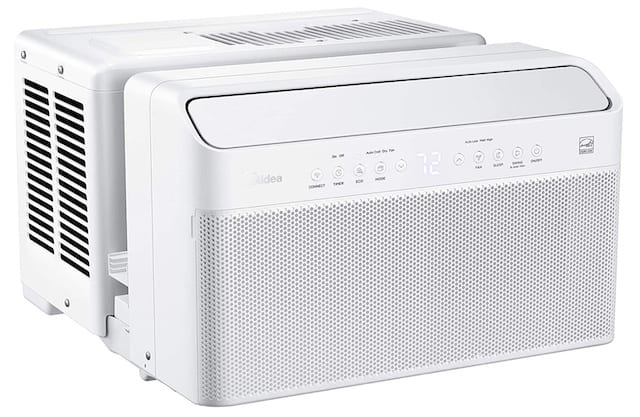
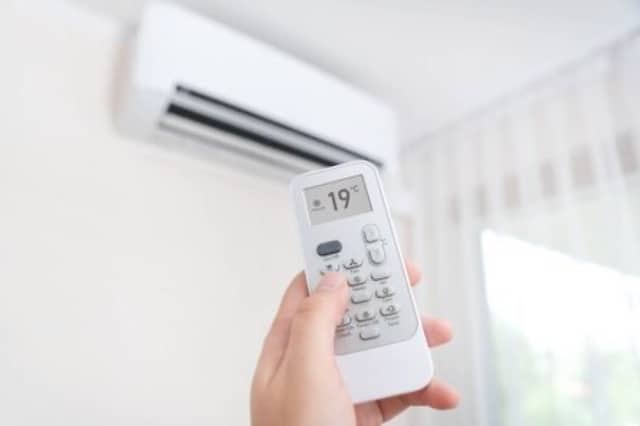
A remote controller commonly comes with portable air conditioners, ductless mini split air conditioners, wall-mounted type indoor units, ceiling cassette units and some window air conditioners. Furthermore, some ducted air conditioners also can add on a receiver on the ceiling and use a remote controller instead of the default wired controller.
2. Wired Controller
Typically, air conditioners with a wired controller have more functions than air conditioners with a remote controller because they are usually more expensive and higher tier. However, we can choose between a remote controller and a wired controller in many types of air conditioners such as the ductless mini split and ceiling cassette unit.
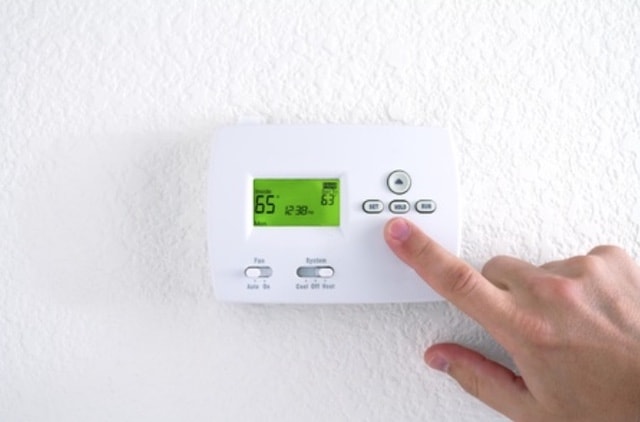


A wired controller has a larger display that typically shows both the user’s set temperature and the current room temperature. It also shows the fan speed, swing position, timer, schedule and operation mode. Furthermore, many wired controllers have multiple pages to show more information about the air conditioner such as alarm history and energy trends.
Analog type wired controllers are commonly found in older ducted air conditioners. They don’t have any display like new digital wired air conditioners and thus, they don’t have many features. Typically, they just have an on/off switch and a dial printed with temperature figures for us to set the desired room temperature.

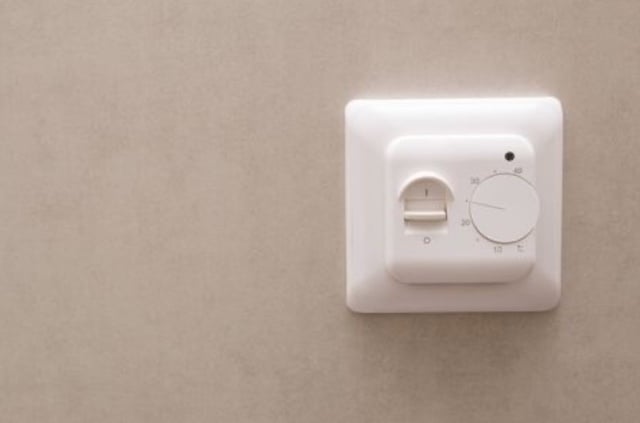
Nowadays, many wired controllers are touch screens. We can swipe around the display just like our phone. But, some wired controllers are still using the basic plastic button for navigation. Many touch screen wired controllers are used for central controls, meaning one controller can control the air conditioner of an entire house or even a building.
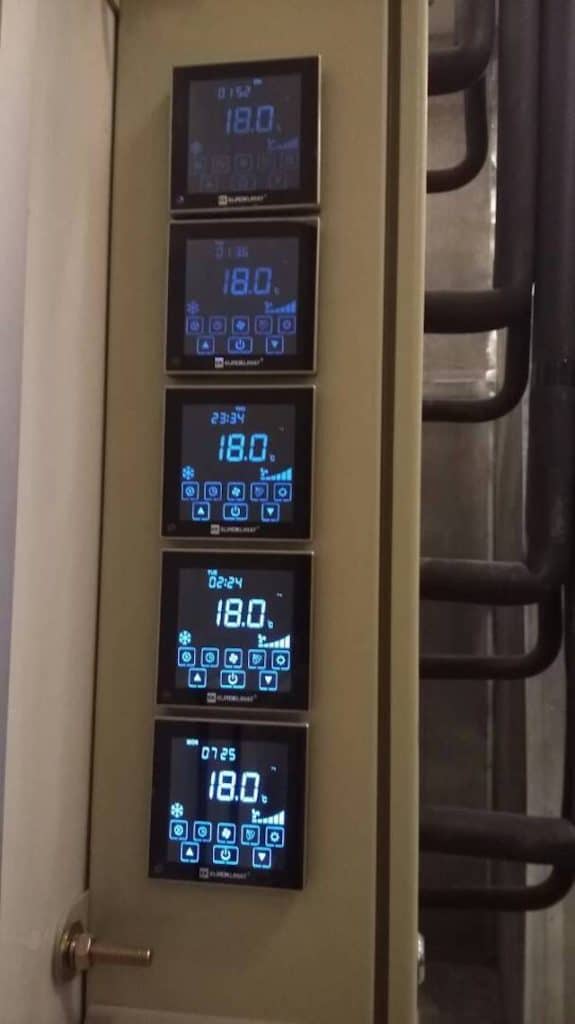
A wired controller can be a room temperature sensor by itself. Thus, we need to place it where it is best to represent the room temperature and avoid its exposure to direct sunlight. If the wired controller is not sensing the correct room temperature, it’ll not control the air conditioner well.
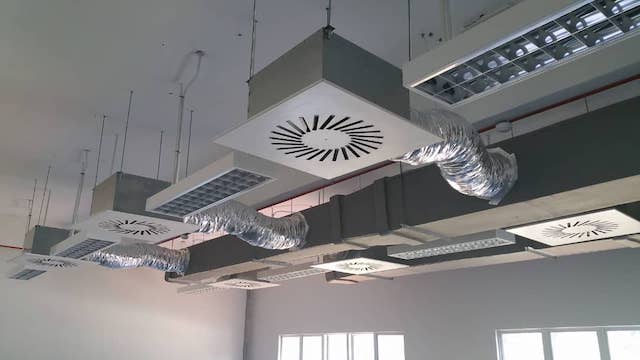

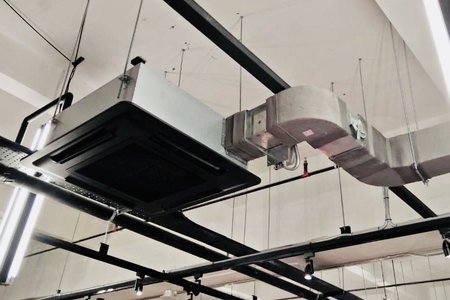
A wired controller is mostly found in ducted air conditioners, central air conditioners and VRF air conditioners. As the name suggests, wired controllers require a direct cable connection from the air conditioner to function. So, they are more expensive to install. However, they don’t need to change the battery every once in a while.
3. Smart Controller
Many new air conditioners are built-in with a smart control function where they all come with a WiFi adaptor. Then, we can use a mobile app to remotely control our air conditioners even when we are not at home, as long as there is a WiFI connection and our air conditioners are connected to our house’s WiFi.
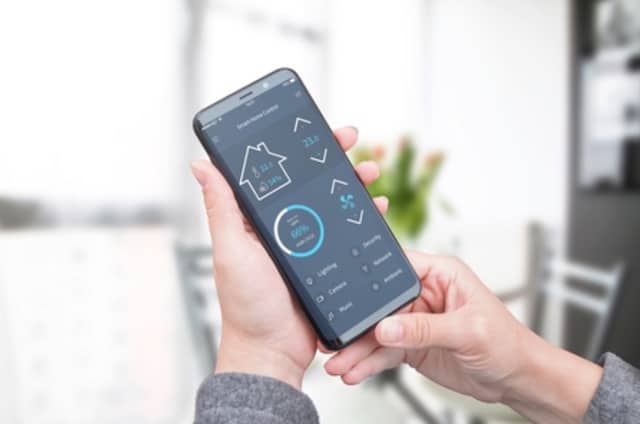


Window air conditioners and ductless mini split air conditioners are the two most popular types of air conditioners that offer the smart control feature. Many of them are at entry level price even with the smart control feature. Hence, even with standard models, we can enjoy a mobile app controlled air conditioner too.
In commercial applications, VRF systems offer smart control as well. They often focus more on the function rather than the appearance. Hence, their graphics are not very nice looking but they are a very useful centralized monitoring controller.

Third party companies also created various kinds of smart controllers for the air conditioner. These smart controllers are separated from the air conditioner and not all air conditioners are compatible. Some of the popular smart controller companies are Sensibo and Aqara.
Using a mobile app to control air conditioners bring us more convenience. In addition, it also can offer more features with some programming works. However, it can’t surpass the limitation of the air conditioner itself.
Commercial Air Conditioner Controllers
Commercial buildings such as hotels, office towers and shopping malls have large chillers that support the enormous amount of cooling needed for the people in the building. Thus, the controller of the chiller is also very complex and huge in physical size.

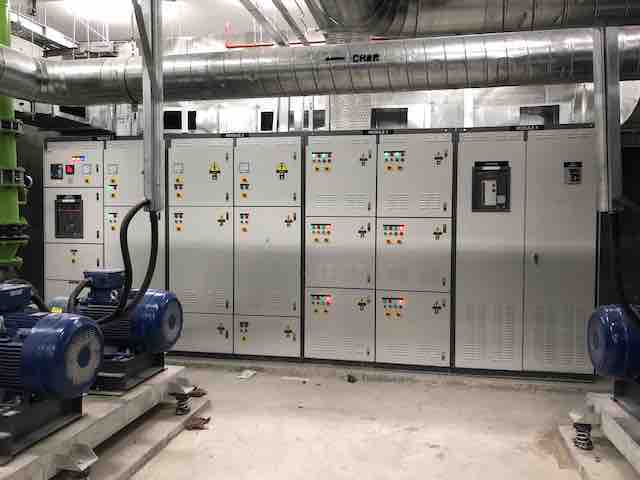
Water-cooled chillers have three types of speed control; a) variable speed, b) stage speed, and c) fixed speed. These different types of speed control can regulate the capacity of the chiller to save energy whenever possible. Besides, there are a lot of sophisticated PLC controls and protection systems inside the chiller mainboard.
Some commercial air conditioners use a customized PLC controller to control the operation. PLC stands for programmable logic controller. PLC controlled air conditioners can do many things that themselves alone can’t achieve such as group operation sequencing and scheduling. It is essentially a centralized control for multiple different types of air conditioners

Using a PLC controller, I would say that you can almost do anything you want with the air conditioner. We are basically writing new programs and software to control different types of air conditioners all at once. Needless to say, the process is very complicated and costly.
Air Conditioner Protection Controllers
Apart from the control that we can see, air conditioners have many other controls within themselves. Some are for internal controls and some are for protection. Let’s look at a few of the protection system controllers.
Overheat Protection
All compressors have an overheat protection where the compressor will stop operation if itself or the surrounding temperature is too high. Compressors always have overheat protection because it is very expensive to replace a compressor if it breaks. Furthermore, we can make mistakes during the installation and overheating the compressor. Hence, having overheat protection for the compressor is essential.
Overload Protection
Overload protection will trigger and cut off power when too much current is going into the air conditioner. Overload protection can be found inside the air conditioner as well as at the switchboard of the air conditioner. Fan motors always have overload protection because dirty air filters can cause a fan motor to draw a lot of currents and eventually damage the fan motor.
Anti-Freezing
Some air conditioners are designed to work in extremely cold temperatures where they may freeze up. Hence, these air conditioners have anti-freezing protection to stop the operation and switch to defrost mode for a few minutes before they turn back on to continue the heating.
To learn more about HVAC, purchase and download the HVAC Begin (eBook).
If you have anything to add (or ask) about this topic, leave a comment down below!



